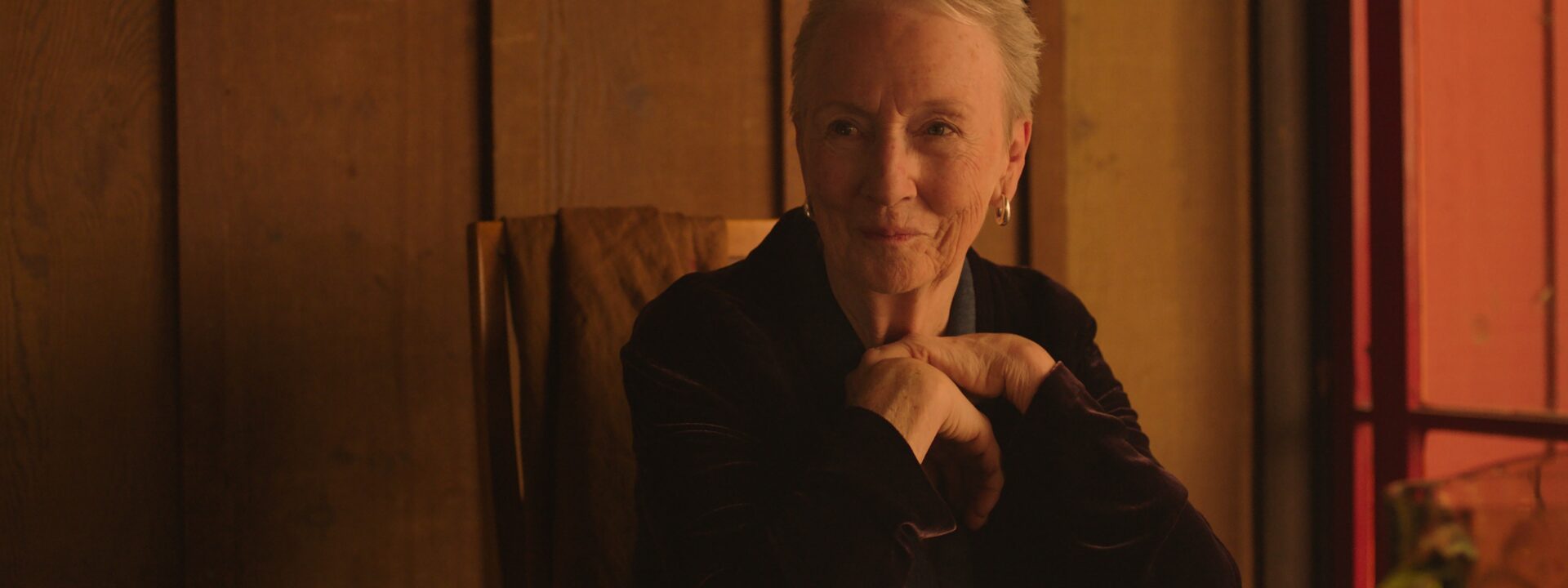Writer-director Sarah Friedland remembers her grandmother, a poetry editor, as a fearless left-wing intellectual who used language with exacting care. When dementia later took away her ability to speak, Friedland—then studying dance—was captivated by her expressive physical movements.
“She would rock and tap in certain rhythms, so full of physical expression,” Friedland recalls, even as her family spoke about her as if she were already gone. “That disconnect between the person we claimed was no longer there and the one still very much present in front of me stayed with me for years.”
These memories shaped Friedland’s poignant debut feature, Familiar Touch. The film, which premiered at the Venice Film Festival last year and won Best Debut, Best Director, and Best Actress in the Orizzonti section, follows Ruth (played with quiet brilliance by Kathleen Chalfant), an elderly former cook whose life quietly shifts when she moves into assisted living. Friedland calls it a “coming-of-old-age” story.
“I wanted to challenge the idea that aging is just about decline—that older people are fading away,” she says. “In coming-of-age stories, characters evolve into new versions of themselves. Why can’t that apply to later life? Our sense of self shifts, but there’s still continuity.”
Friedland draws from Lynne Segal’s book Out of Time: The Pleasures and Perils of Ageing, particularly the concept of “temporal vertigo”—the way our past selves mingle as we age. Chalfant embodies this beautifully, shifting between playful flirtation and the commanding presence of a seasoned cook.
A celebrated New York theater actor known for Angels in America and Wit, Chalfant connected deeply with the role. Seven years ago, her best friend, playwright Sybille Pearson, began showing signs of dementia. “When I read Familiar Touch, Sybille was at a similar stage as Ruth,” Chalfant says. “In a way, this role was a gift to her—but even more, Ruth was Sybille’s gift to me. Watching the film, I saw so much of her on screen.”
The film began as a movement study—Friedland, who has a background in experimental dance films, mapped out Ruth’s motions like “football diagrams of where characters move in a room.” The opening scene, a meticulously observed sequence of Ruth moving through her longtime home for the last time, sets the tone.
The project grew from Friedland’s work as a part-time caregiver for New York artists with dementia, which led to teaching filmmaking to older adults. “That intergenerational collaboration was one of the most joyful experiences of my life,” she says. “It made clear that if we were going to make an anti-ageist film, we had to work alongside older adults and caregivers.”
The result was an experimental residency blending filmmaking and caregiving at Villa Gardens in Pasadena. Over five weeks, the crew ran workshops with residents, who later joined the production. “There’s this myth that older people can’t handle technology, which is completely false,” Friedland notes. “Seeing them draw from their lifetimes of experience and apply it to filmmaking was incredible.”Exploring the art of filmmaking was truly thrilling. The residents helped shape the film’s tone, especially its humor—like a woman using a bag clip to hold back her hair. “One of the first things they told me was, ‘This film can’t be depressing—it has to be funny, but the humor shouldn’t mock them. It should laugh with them, embracing the absurd and uncanny,'” Friedland explains. “There’s a unique kind of humor that people in care settings know well, one that’s rarely shown in films about aging. Too often, older adults are portrayed in a condescending way, as if their quirks are just cute or silly.”
The residents also kept the production grounded. “Being around the people whose story we were telling was a constant reality check—and they weren’t shy about sharing their thoughts,” Chalfant says with a smile. “Plus, it’s a generation—my generation—that grew up loving movies.”
For inspiration, Friedland looked beyond American cinema to films like Lee Chang-dong’s Poetry (2010), Vittorio De Sica’s Umberto D. (1952), Cristi Puiu’s The Death of Mr. Lazarescu (2005), and the 2019 Lesotho film This Is Not a Burial, It’s a Resurrection. “These films genuinely explore the inner lives and individuality of older adults,” she says. “That’s often missing in American films, where aging is usually framed as a tragedy that slowly erases a person’s identity.”
The film also examines how women who came of age during the feminist movement navigate the need for care later in life. “I wondered what it would be like for this generation of women, who fought for independence, to suddenly rely on care,” Friedland notes. “Our society often sees needing care as dependence or a burden, rather than recognizing it as part of a natural cycle of interdependence. The idea that we all give and receive care at different points in our lives aligns with feminist values of community and mutual support.”
This issue is far from abstract today. The Senate is currently reviewing a bill with drastic Medicaid cuts after it passed the House last month. “Medicaid provides care for 17 million older adults in this country. If these cuts go through, many will lose access to care,” Friedland stresses. “It’s a very frightening time.”
Familiar Touch opens today at Film Forum in New York City and will expand to select theaters nationwide in the coming weeks.


